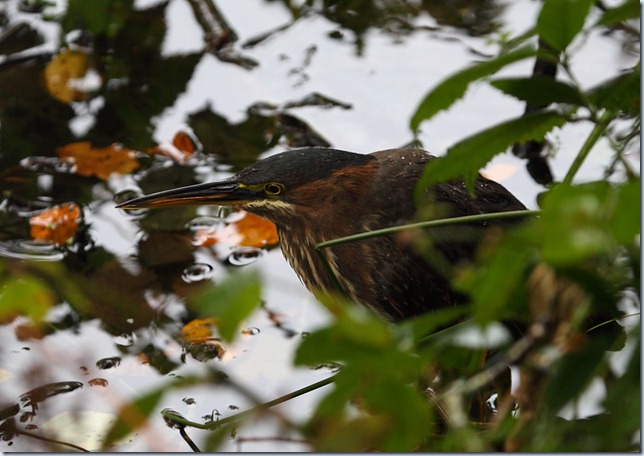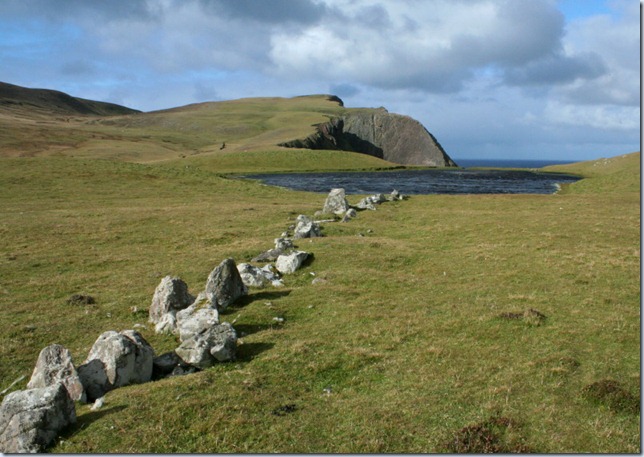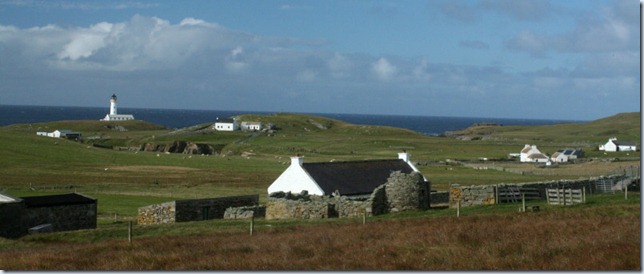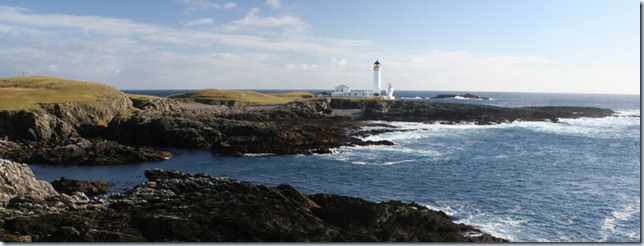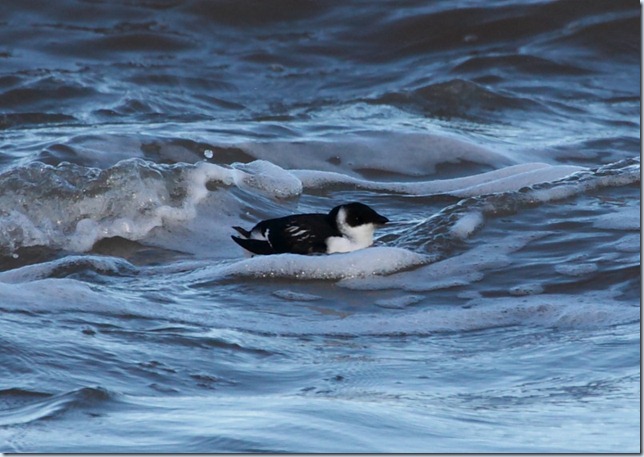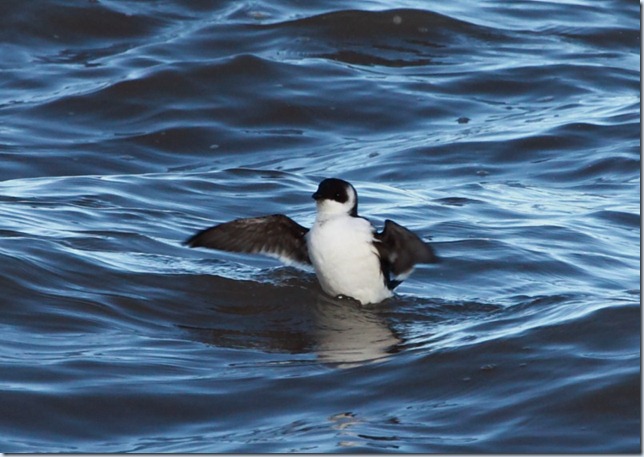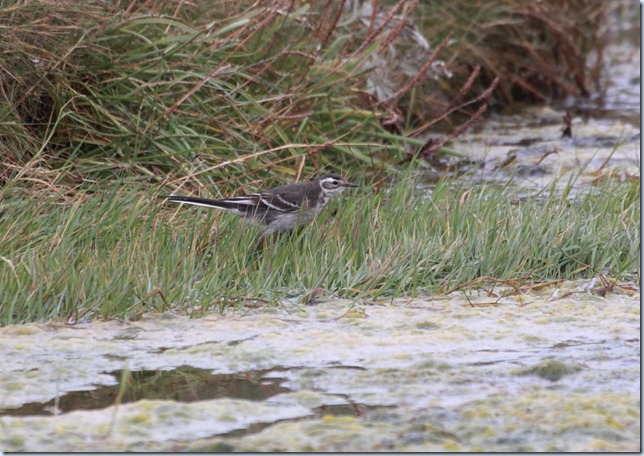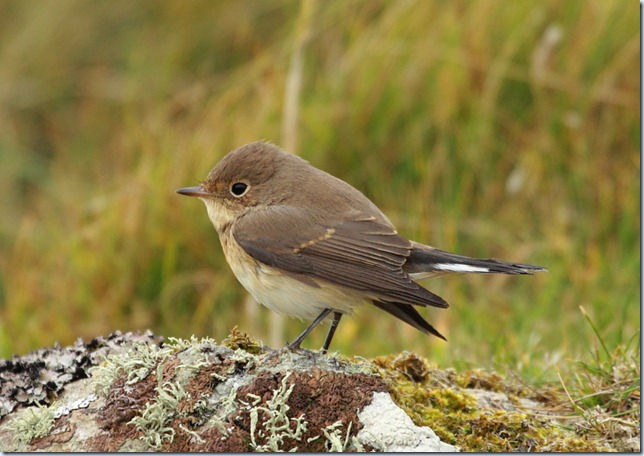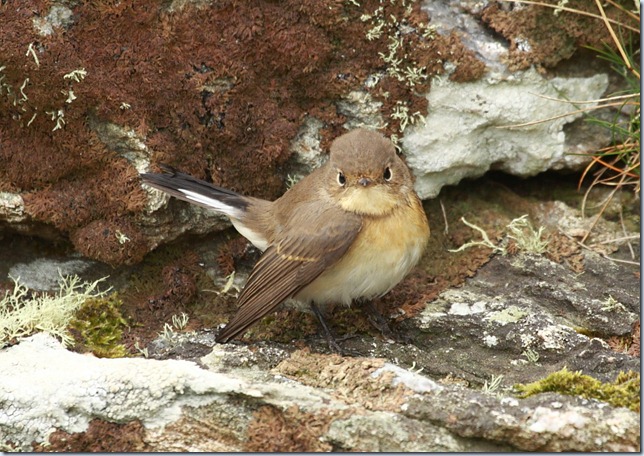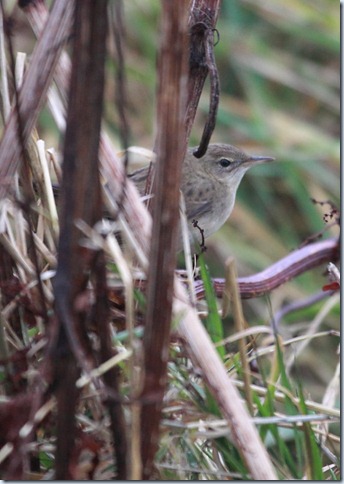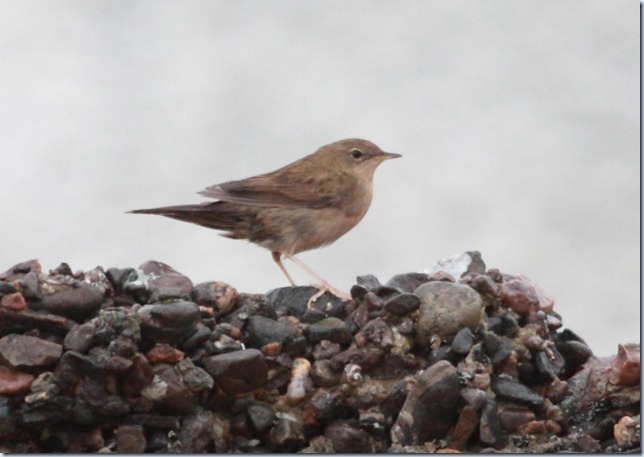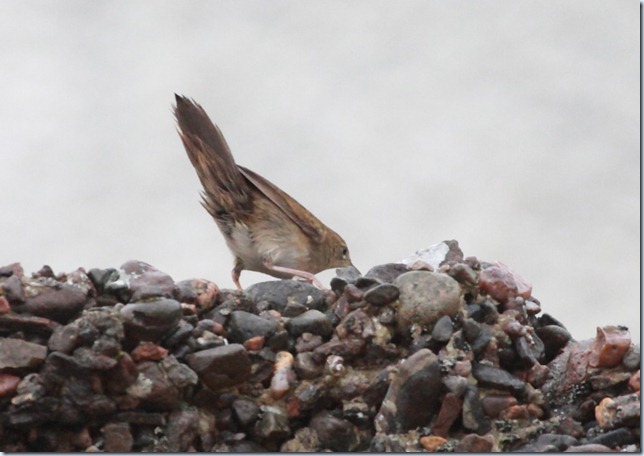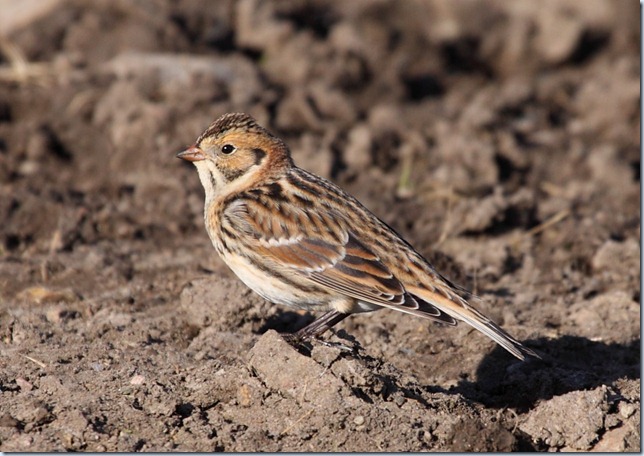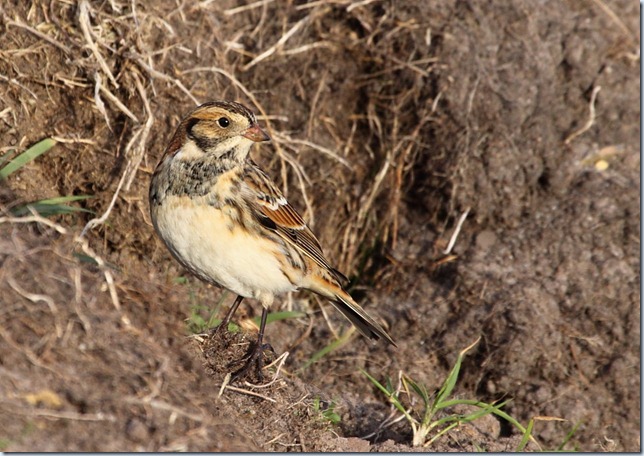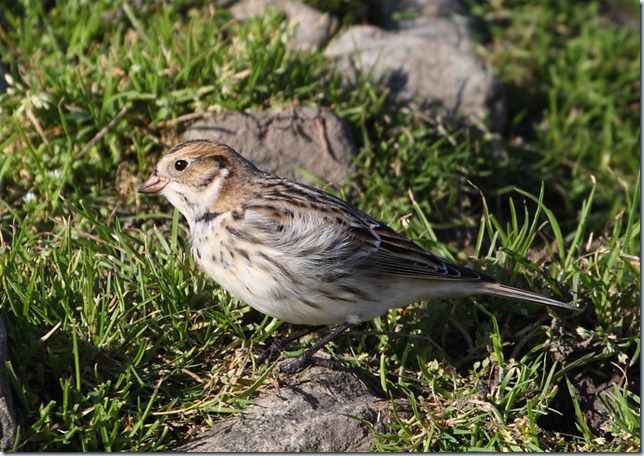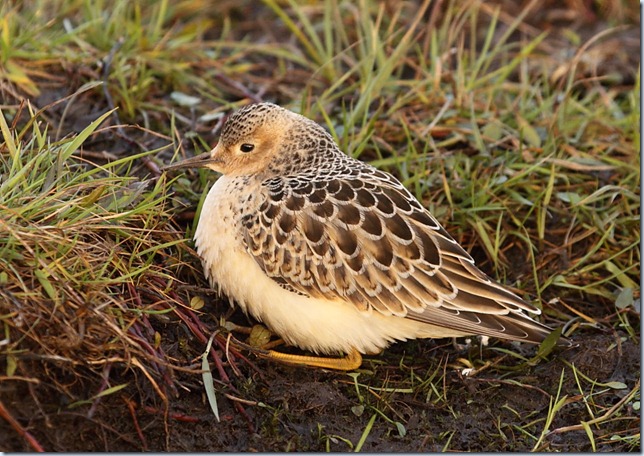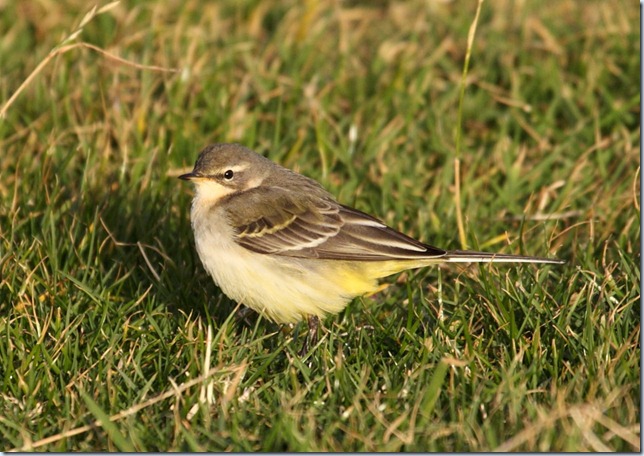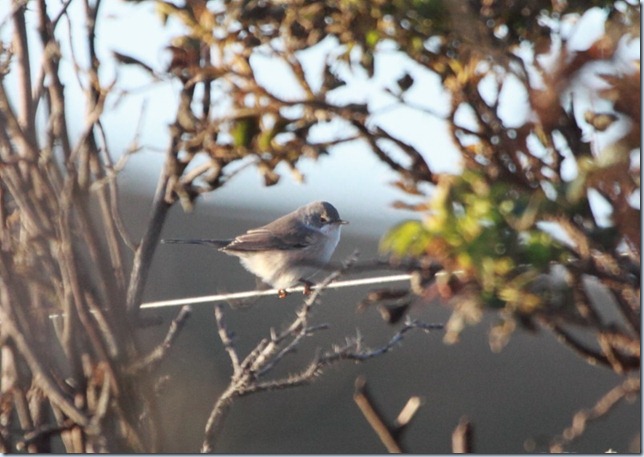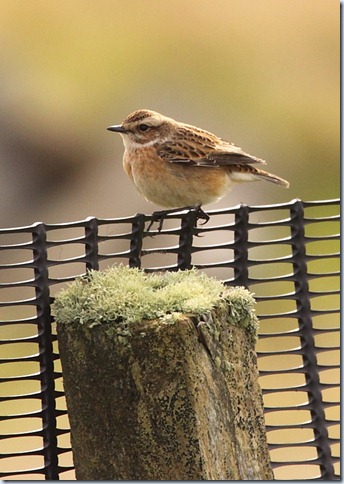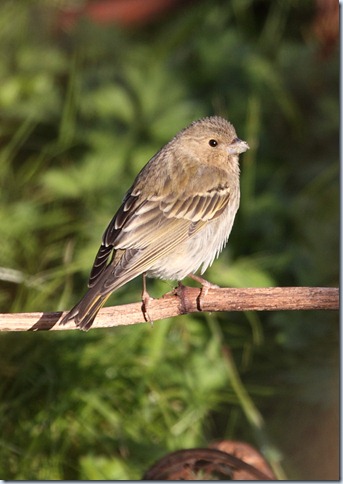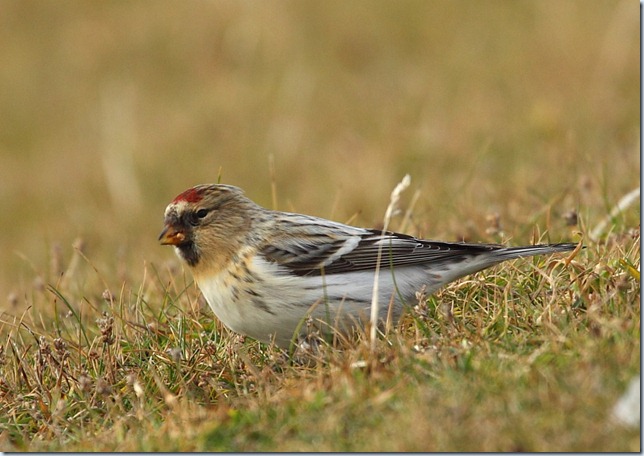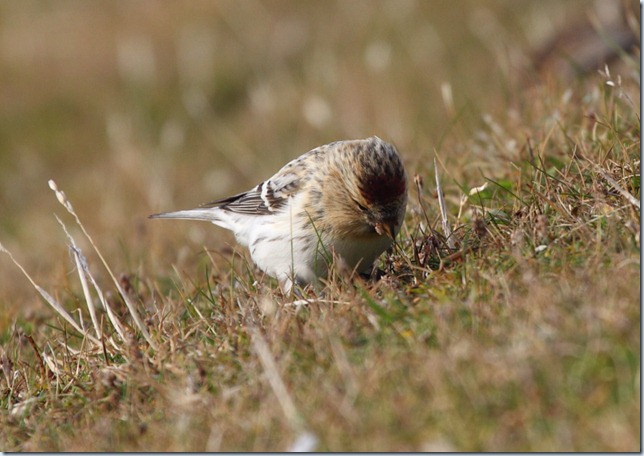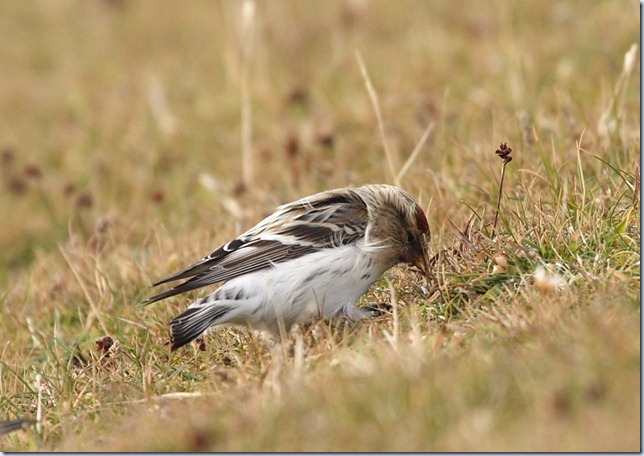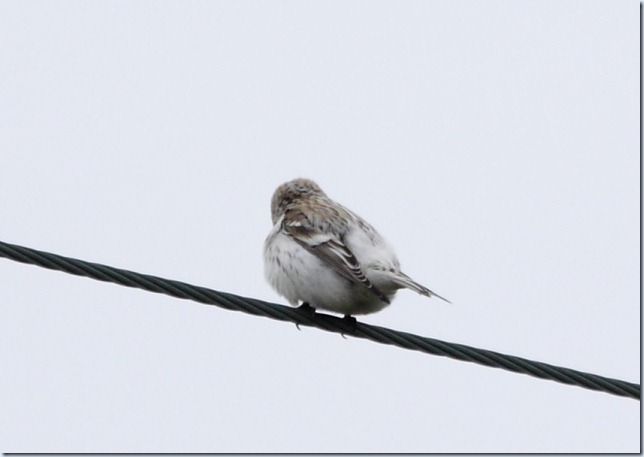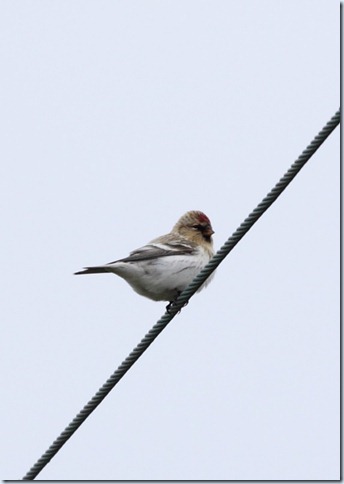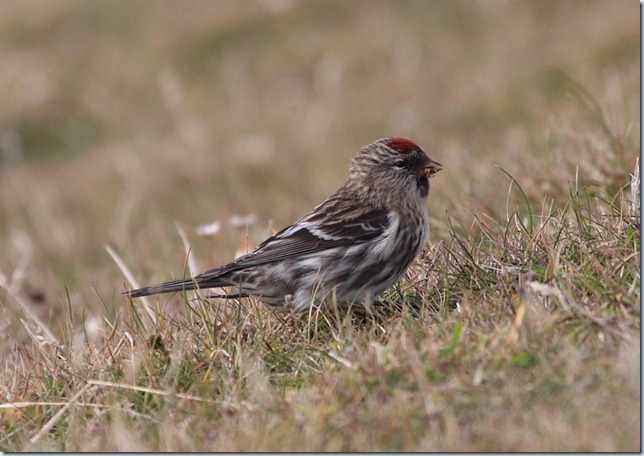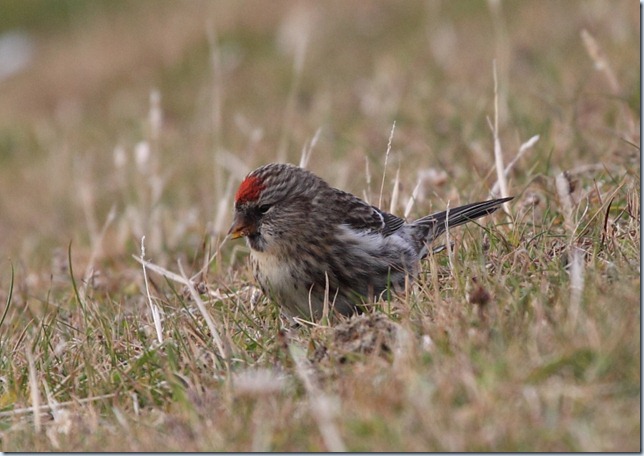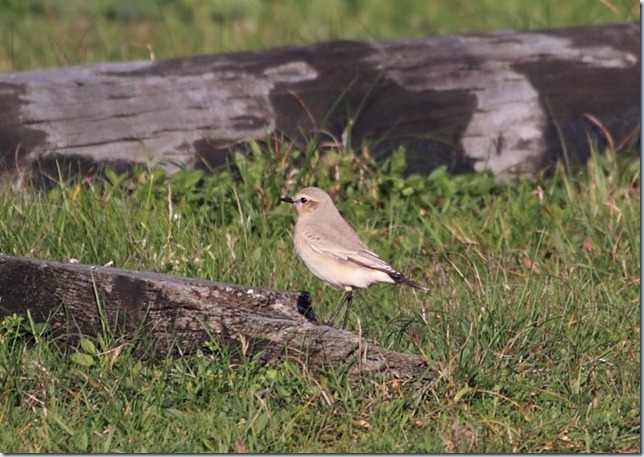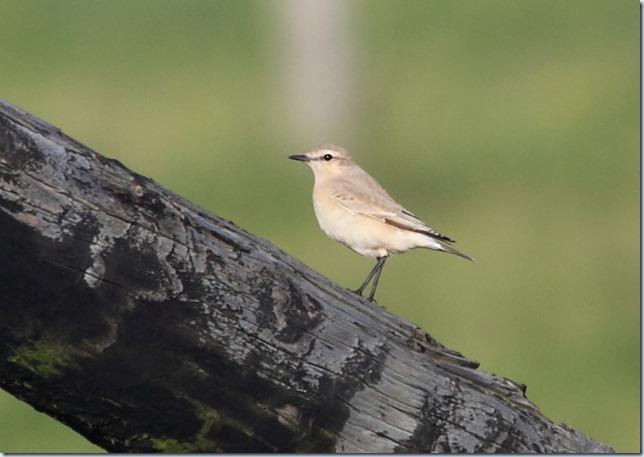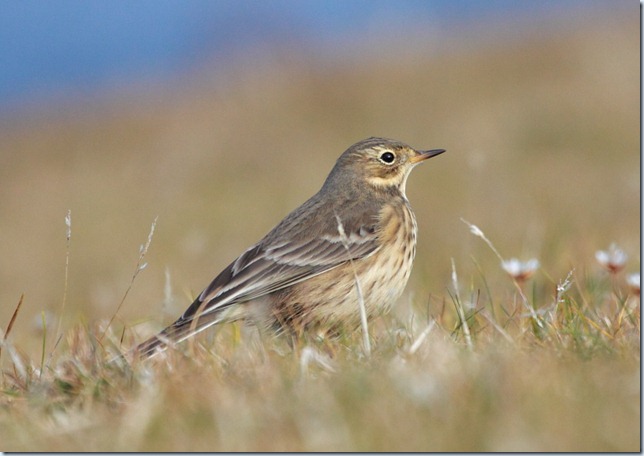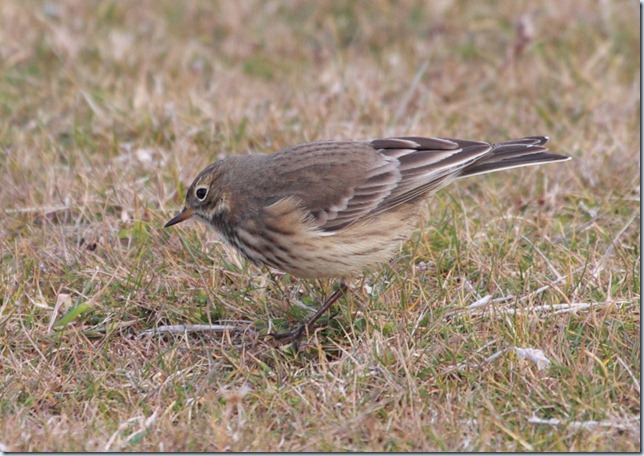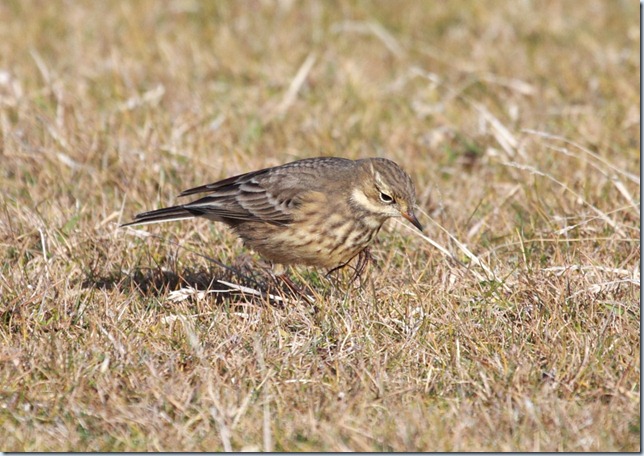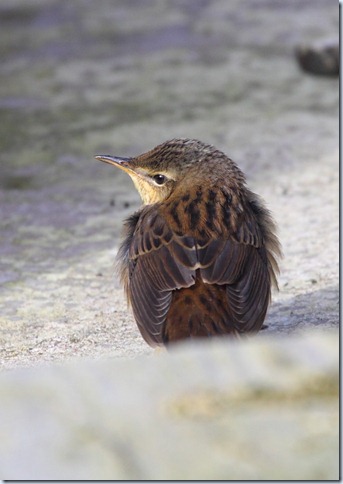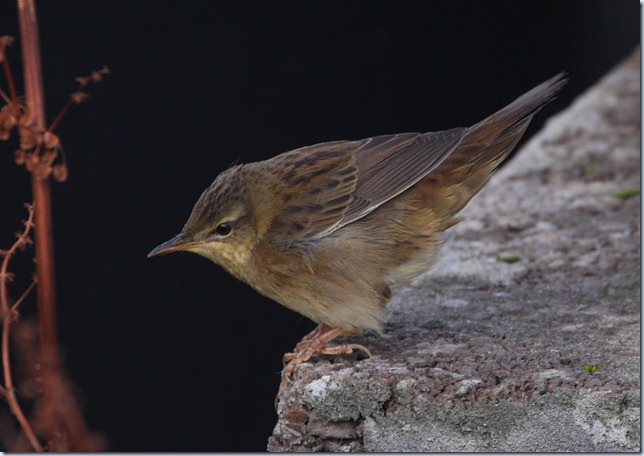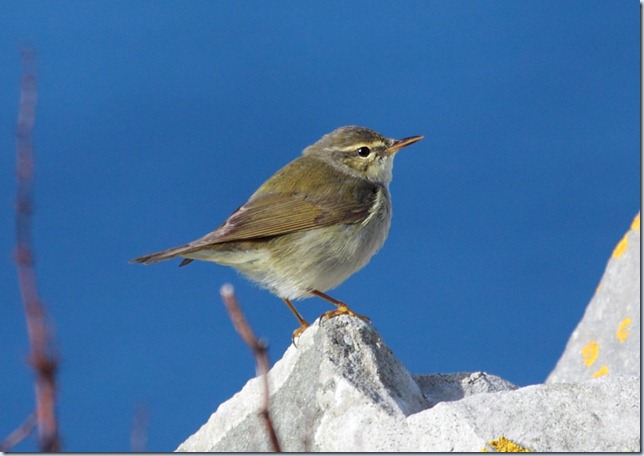I’ll post more photos in the next day or two, but here’s a quick snap hot off the camera. Although we only got flight views of the American Bittern at Zennor (albeit good flight views), the Green Heron showed fantastically, down to about 6 feet! Shame the weather wasn’t a bit better – this shot has been tidied up from ISO 1000.
Sunday 31 October 2010
Wednesday 27 October 2010
Fair Isle Scenery
Been meaning to post these for ages, but work and birding keep getting in the way. Here’s a few snaps from Fair Isle to illustrate the place, rather than just the birds!
So, we arrived on Fair Isle on one of these. Seven passengers max…
… and (after enjoying cracking view of the PGTips), we settled in to the new observatory. A surprisingly large building for relatively few people, it’s a fantastically comfortable base. There were generally a flock of Twite outside the front window, and (though you can’t see it here), there’s a small plantation on the north side which is always worthy of checking for that mega passerine!
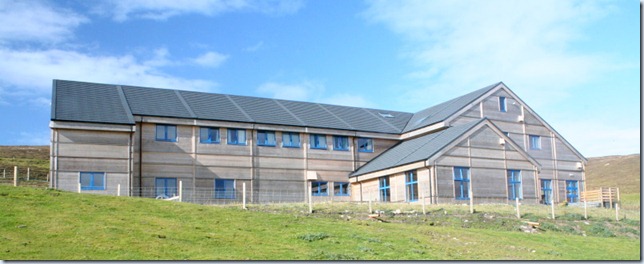
Looking the other way down the hill from the obs, you can see the harbour. Waders on the beach included Purple and Curlew Sandpipers, while there were usually a few Lapland and Snow Buntings in the vicinity.

This is Easter Lother Water, right up at the north end of the island. Dad probably took this photo while I was crawling around in the heather with the redpolls!
And now to the other end of the island. This view of the south illustrates just how open and un-vegetated the Isle is; basically birding for passerines is focussed on dry stone walls (dykes), along shallow ditches, in steep gullies in the cliffs (geos) and in the small number of gardens. Having said that, though – goodies can turn up anywhere!
Another view of South Light – a really peaceful and beautiful spot. Seals and Eiders were bobbing about in the shallows.
I loved the place – will definitely go back!
Thursday 21 October 2010
No, no…. Not a Little HAWK!
Such was the conversation with a curious non-birder at Lowestoft on Sunday. Here’s why… nice find btw, Jono!
Monday 18 October 2010
Out Skerries pics
Dad and I spent our last full day on the beautiful Out Skerries islands, and were well rewarded with some excellent birds, most of which posed for photos.
First up, this (surprisingly dark mantled) Citrine Wagtail was new for Dad and Paul:
… and shortly afterwards, the Black-headed Bunting was new for me as well. It showed exceptionally well, down to a few feet at times.
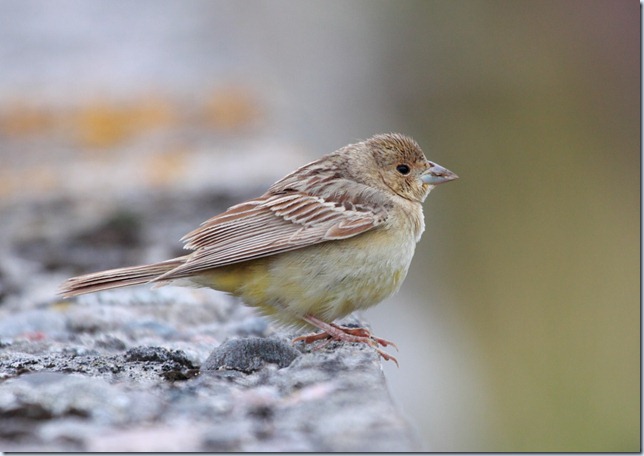 Then there was a Red-breasted Flycatcher, feeding around tussocky grass. Although these are often pretty tame, this individual was particularly approachable since it appeared to have a damaged right wing. It was still feeding well, but since it didn’t appear able to get more than a foot off the ground, I guess the future wasn’t looking too bright.
Then there was a Red-breasted Flycatcher, feeding around tussocky grass. Although these are often pretty tame, this individual was particularly approachable since it appeared to have a damaged right wing. It was still feeding well, but since it didn’t appear able to get more than a foot off the ground, I guess the future wasn’t looking too bright.
And then this gave us all some exercise, and lessons in Locustella ID.
Thursday 14 October 2010
Lapland Buntings
Wednesday 13 October 2010
A Fair Isle miscellany
This Buff-breasted Sandpiper showed well every time we walked past its favoured field at Barkland, though I never really spent enough time with it to get the shots I wanted. This one was taken just before dusk, in late afternoon sunshine, while the bird was rather dozy and even more approachable than normal!
Next up, an interesting wagtail. Clearly this is a ‘flava’ wag of some description, but it was really strikingly grey and white, the only yellow on the bird under the vent – my instant reaction was Grey Wag before it landed, and I’ve certainly not seen an autumn bird like this before. I think consensus in the obs was that it was probably a Grey-headed, race thunbergi, but I’d be interested in any comments either way.
Now, a rather dodgy photo… but a cracking little charismatic bird! This Subalpine Warbler necessitated a brisk walk down to Lower Leogh on our final afternoon, but was well worth while. Given the other birds turning up on the Northern Isles at the time, I’d speculate that this is probably an Eastern race bird, but I guess I’ll never know for sure.
Finally, a commoner migrant, but one of my favourites. For some reason, I wasn’t really expecting to see many Whinchat this far north by late September, but there was certainly no shortage for the first week of our trip – we regularly saw three or four a day.
Tuesday 12 October 2010
More finches…
Twite were taken on Fair Isle, while the Rosefinch is one of two seen at Quendale on our first afternoon on Shetland, just after we’d seen the River Warbler. It was typical of Shetland birding:
- walk up to tiny vegetable plot
- make a few pishing noises
- two birds immediately pop up
- both are Rosefinches
- Cue sound of motor drive
Well, OK, it’s not always quite that easy… but you get the idea.
Monday 11 October 2010
Hornemann’s
Back to (very) northern birds again… We saw three Hornemann’s Arctic Redpolls on Shetland, the first two twitched on Unst (see photos on the wires), while the third was found by Tim Cleeves as he stood about two yards to my right on Fair Isle. D’oh! Still, it was a cracking bird, and posed pretty well for pics.
And here’s an interesting ‘north-western’ type Redpoll, photographed alongside the Arctic on Fair Isle. It appeared very cold toned and grey in the field, with heavy streaking on the flanks against a clean white ground colour. Size was pretty similar to the Hornemann’s – ie large!
If anyone has any comment on which subspecies this bird might be (presumably islandica or rostrata), and why, please drop me a line.
Sunday 10 October 2010
Isabelline Wheatear, Lowestoft
And here’s another brief interruption in the flow of photos from Shetland – my second Isabelline Wheatear in Suffolk, this time in glorious sunshine. Good to see a few familiar faces and have a bit of a chat, as well.
At long, long last…
…I have seen an Olive-backed Pipit in the UK! This may not seem a particularly impressive or noteworthy achievement, but believe me, after the number of hours I’ve wasted on this species in the last 15 years, it’s made my weekend. Prior to yesterday, I think I’d probably dipped at least seven OBPs, from Scilly to Suffolk, and to make it worse all were present again the following day. I really don’t know how I managed such a ridiculous run of form, but there you are – everyone has a bogey bird, I guess, and I need another one now. Brown Flycatcher, perhaps…
Anyway, here’s what all the fuss is about:
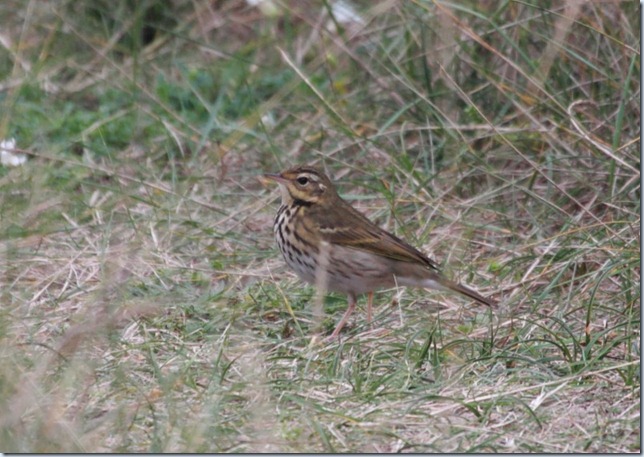
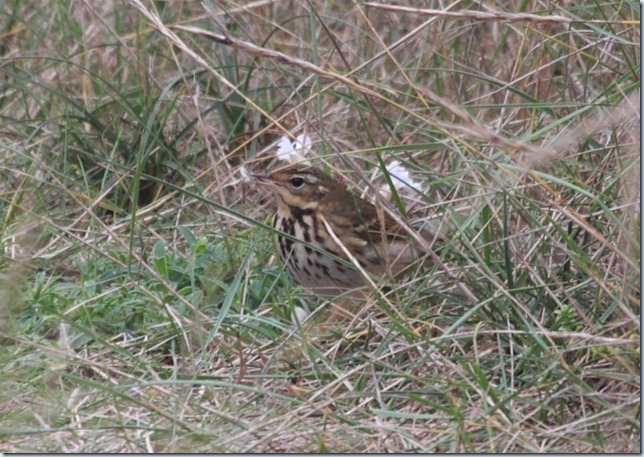 And here’s the scene of the twitch – a long slippery walk over the saltmarsh to reach an approx 100m long line of gorse:
And here’s the scene of the twitch – a long slippery walk over the saltmarsh to reach an approx 100m long line of gorse:

Thursday 7 October 2010
Buff-bellied Pipit, Fair Isle
Another cracking bird from Fair Isle – it took us three visits to North Light to see it, and a fourth in better weather to get half-decent pics, but it was well worth it. By contrast, the bird at Esha Ness showed first time, but the weather was pretty absymal!
It was surprisingly distinctive amongst Meadow and Rock Pipits – very plain, almost unstreaked, mantle; face pattern dominated by a strong eyering; dark legs; and (obviously) a buff belly! The call was also clearly different – an almost bunting like soft ‘sip’.
Wednesday 6 October 2010
Pallas’s Grasshopper Warbler, Fair Isle
Let’s start with my highlight of the trip – PGTips to its friends!
We arrived on Fair Isle a day late, after spending eight hours kicking our heels in Tingwall airport the day before. Regular updates of a Pallas’s Grasshopped Warbler showing well didn’t help our mood! So, when we finally touched down, there was no doubt about where to get dropped off – straight to Upper Leogh, please…
The warbler had been showing on and off in a small vegetable garden, and along the adjacent stone walls and ditches, including just ten minutes before we got there. However, it took 45 minutes of patient (and nerve-wracking) searching before it re-appeared. Initially, we only got the briefest of views as it pinged from place to place… until it ended up in a tiny walled enclosure, and showed superbly. Here’s the results.
This appears to be a rather worn individual, with the white tail tips entirely worn off, and those on the tertials heading the same way. Even so, the warm toned rump, yellow throat and creamy supercilium contrasting with a darker cap made the ID relatively obvious – and what a great way to see this much-wanted Fair Isle speciality!
Tuesday 5 October 2010
Shetland Photos… coming soon!
Keep checking the blog over the next few days – there’s about 10GB of images downloading at the moment.
For the moment, here’s a very elusive, boring little bird from Shetland, showing poorly at great distance in terrible weather. Not.
Monday 4 October 2010
A manic end to the trip!
Wow! What a couple of days birding!
Since I last updated the blog, I've seen A LOT! On a remarkably calm Saturday morning, after the mother of all storms overnight, we went to Kergord first thing, hoping for some exotic storm driven waif. A Hawfinch was an enjoyable find early on, and then several yellow-broweds and a Pied Fly flitted around us, but the Big One is probably still in there somewhere.
From here, we headed to Channerwick. Keen students of bird news services may guess what happened next... I found a small, pale hippolais warbler. Clearly a Booted or Sykes, I rang a couple of people to help try and sort out which one we'd got. But for the following four hours, it steadfastly refused to play ball, never perching up to give decent views or photo opps to Dad and I, nor a couple of local birders. I didn't ever get a clear nor prolonged view of the head to form an opinion on the specific id. According to some others who arrived as we gave up, it had been there since Wednesday! Yesterday it was reported again as a Booted, but today it's been MEGA -alerted as a Sykes! No idea who by or why, but I'd love to see some pics...
After that, we headed down towards Sumburgh to use the last hour's daylight on a Radde's Warbler... We were just passing Levenwick when Jono started flashing his lights in the bar behind, and the phone rang: "Swainsons at Levenwick". Bloody hell... Time for a swift U turn! The thrush had departed the small quarry where it had been found, but with daylight fading, surely it couldn't have gone far? I wandered up the hillside to do my bit for the search, until it got relocated in a densely vegetated garden. After a nerve wracking wait (while all the rest of the guys told me about their views and I inwardly cursed), it reappeared, first on the deck, then giving fantastic flight views showing the Catharus underwing as it hovered. Superb!
Next day, we took a bit of a punt, and went over to Skerries, lures by a good list of rare and scarce birds. Our 'want' lists varied, but there was at least one new bird in the offing for most of us. Personally I was hoping for two birds to stick : a Black-headed Bunting, and the unmentionable pipit.
The 90s minute crossing was relatively uneventful, in terms of birds and seasickness, but within 10 minutes of getting onto the island, we were watching a Citrine Wagtail. As pictures will hopefully reveal in a day or two, this was a remarkably dark individual, appearing almost black and white with a dark mantle. The wraparound ear coverts, clear wing bars and entirely dark bill were as expected though, while the call was also interesting to hear... Barely distinguishable from Yellow Wag, perhaps just slightly more buzzy or frothy?
From here, a short walk over the bridge and onto the western island took us to the graveyard, where the bunting was present and showing well - my fourth new bird for the trip. Continuing on towards the marsh, I quickly found the reported Red-breasted Flycatcher, but we were disappointed to see it appeared to have a damaged right wing. It seemed to be feeding ok, picking insects from tussocky grass, but clearly couldn't get more than a foot off the ground. At the end of the runway, the Short-toed Lark showed fairly well though it remained rather flighty throughout. Certainly better than the appalling views Dad and I got on Blakeney Point a month or so ago, though!
Just as we thought we'd run out of the reported birds (no sign of the pipit!), the pager pinged into action. I literally read the message twice before it sank in. Lanceolated Warbler by the graveyard at 3pm! It was 20 past, and we were booked on the return ferry departing at 4! A VERY swift march back across the bridge and up the hill, and we saw the bird in flight and then briefly perched- many thanks to the resident birders for thinking of us, and putting the news out! It had clearly not got much obvious streaking on the throat and it didn't strike me as particularly small, which seemed a bit odd, but the finders had more experience than me (having seen none!), and apparently had some photos. We couldn't determine if there was a later sailing off the island, so had to race back to the harbour after only 15 minutes with the bird.
On arrival there (with time to spare, thanks to a very kind lift from a local gent) we discovered that there WAS a 7pm return crossing, and since PH hadn't seen the Lancy, and I wanted better views, we stayed on with my Dad. The bird showed a bit better, perching on a wall for a few moments, and I got even more confused... Although our photos were poor, in grey and rainy conditions, the flanks appeared pretty clean, and my impression of the bird's size didn't change. I wanted to believe it was a Lancy, but it felt wrong (while the Fair Isle Pallas's Grasshopper Warbler had felt pretty much spot on in similarly brief views). We got halfway back to the harbour with time to spare, before I went back for a third look! On this occasion, I couldn't find it, so would just have to wait for photos to study.
This morning, a message announced that it was indeed a Grasshopper Warbler after all. I guess this illustrates two things. First, obviously these can be tricky birds to identify, being both elusive and variable in plumage. Second, it shows that you shouldn't just assume what's been reported is correct... Without wishing to sound smug, i'm really pleased that I voiced doubts although I've lost a lifer!
Finally, our birding marathon ended this morning with the pleasingly uncontroversial Radde's at Sumburgh. Meanwhile, apparently the Mainland PG Tips might not be one after all! Shetland birding: always interesting and engaging, but rarely easy!
Friday 1 October 2010
Entertaining weather... And reasons not to twitch
Last couple of days have been more than slightly hard work! Yesterday, we had rain... Quite a lot of it, and persisting all day. Today, there's been a very bad case of wind. (No, not Paul after a double strength Madras, worse than that). It's currently blowing about 40mph, and strengthening... Gusts of up to 70mph forecast overnight, and lots more rain too. Lovely.
However, by dawn tomorrow, in theory everything will have calmed down. Hopefully this will mean everyone's out and about, finding various rarities as they emerge, battered and hungry, from under bridges, behind sheep pens and inside boatsheds.
We have seen a few things in the last couple of days though... Top of the rarity billing comes another Buff-bellied Pipit. Yawn, another one?! Then there's been a selection of flycatchers: 2 Red-breasted, 2 Pied, and about half a dozen Spotted. Warblers are nigh on impossible right now (we dipped the Booted, but didn't give it long, and had no real expectation of seeing it), though there are still plenty of Yellow-broweds about.
That brings me on to one observation about birding on Shetland. When a rarity gets reported, unless it's a real mega (think Zoothera, or Rubythroat), it's quite likely to be a waste of time twitching it. Why? Well, first there won't be anyone else looking... birders are thin on the ground, and I suspect the locals have seen it all before. Furthermore, lots of good birds are found and identified when they're flushed, either unintentionally, or by someone actively working a patch. Nothing wrong with that at all (in fact, I wish more people down south actually searched for birds like this), but it does mean birds get moved about. Also, directions for regular Shetland birds won't be detailed... generally just the name of the village. (If you see one of these on your patch every year or two, why spell it out!) Finally, cover is pretty sparse. Even some of the best patches are pretty small, so they might not always hold birds for long.
As a result of various such factors we've dipped Rustic Bunting, Bluetail, and Booted and Melodious Warbler. Nothing amazing (none of them a UK tick, though Bluetails are always superb) so actually, if I had the time again, I wouldn't bother trying for some of these, I'd keep bashing the nearest sycamore, nettles or irises.
I guess what I'm trying to add to the Shetland vs Scilly debate is that the birding is very different up here. If you want to hare around and tick off birds that other people have found, you'll probably be disappointed. However, I reckon it probably rewards hard work more than Scilly... Keep plugging away and maybe you'll get lucky, with something good all to yourself.
